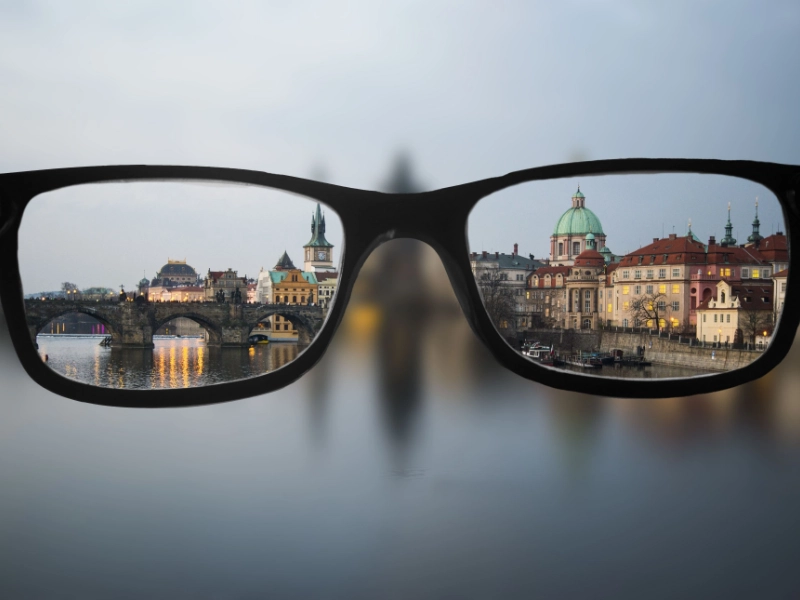Myopia, another name for shortsightedness, is a common eye ailment that results in hazy images of distant objects. It occurs when the eye's focusing components are malformed.
It is believed to be partially hereditary, but it has also been connected to prolonged concentration on up-close objects and insufficient outside play during early growth years. Numerous therapies have been created to slow the advancement of myopia.

Long-distance objects may appear fuzzy and out of focus if you have short sight. This occurs because light cannot focus straight on the back of the retina because of an excessively steep curvature of the cornea, the clear front surface of your eye, or an excessively lengthy eyeball.
The most common times for you to develop shortsightedness are in your early teens or childhood. It can run in families and is frequently associated with a childhood growth phase that involves a lot of close work and little time spent outside.
To correct your distant vision, you will typically need to wear prescription glasses or contact lenses. Adults may benefit from laser refractive surgery, which can bring back clear, crisp vision. When you get older than forty, you may notice a minor decrease in the demand for myopia. This is because as you age, your lenses get less flexible and more rigid; therefore, for most people, their myopic prescription stays rather steady until they are around fifty years old.

The focusing apparatus of the eye malfunctions in nearsightedness (myopia), causing distant objects to seem fuzzy. Light rays don't focus correctly on the retina in the back of the eye because the cornea, the clear front surface of the eye, is either excessively steeply curved or the eye is longer front to back than usual.
People of all ages are affected by this widespread ailment, although it typically manifests itself in infancy and adolescence. It is believed to be caused in part by kids who focus too much on nearby activities like reading or using handheld electronics. It may also be connected to insufficient outdoor time in natural light.
The simplest approach to finding out if you or your child may be nearsighted is to schedule an eye test using an eye chart. In addition to correcting any blurry or distant vision, this will enable an optometrist or ophthalmologist to calculate your prescription for glasses or contact lenses.

Those with normal eyesight can readily perceive items in close proximity as well as far away. This is because the cornea, or transparent front surface of the eye, and the internal lens are perfectly shaped to cause an image to fall on the retina precisely when the brain focuses on an object. The ciliary muscles in the eyes contract when a person looks at a close object, changing the shape of the lens and sharpening the focus of the image. We refer to this procedure as accommodation.
Myopia, or short sight, is brought on by either an excessively long eyeball or an improperly steep corneal curvature. This indicates that light enters the eye at an angle and travels across the retina before arriving at the centre of the retina when an object is viewed up close. The message conveyed to the brain is, therefore, hazy. Hyperopia, a disease where the eyeball or cornea is shorter than average, causes some people to have hazy vision at all distances.

Items in close proximity appear clear to those with short sight. Light concentrates in front of the retina in the rear of your eye because the cornea, the transparent front surface of your eye, bends too sharply or because your eyeball is too lengthy. It typically begins in childhood or the early adolescent years and is rather prevalent.
Glasses or contact lenses can be used to treat myopia, or shortsightedness. The form of the lenses aids in proper eye focus. Opticians will advise you on the prescription that will work best for your eyesight from a list of options that are available on the NHS.
The majority of myopics are able to control their symptoms and do not develop new vision issues. On the other hand, having myopia may make you more susceptible to developing glaucoma and retinal detachments in later life. For this reason, it's critical to have routine eye exams. These are provided by the NHS at no cost to kids and teenagers enrolled in full-time programmes.